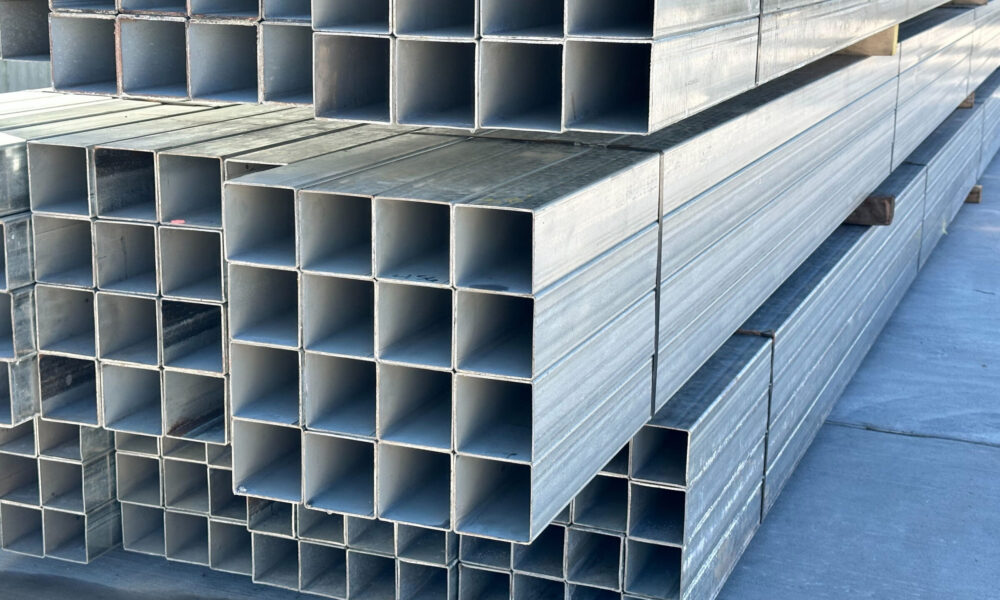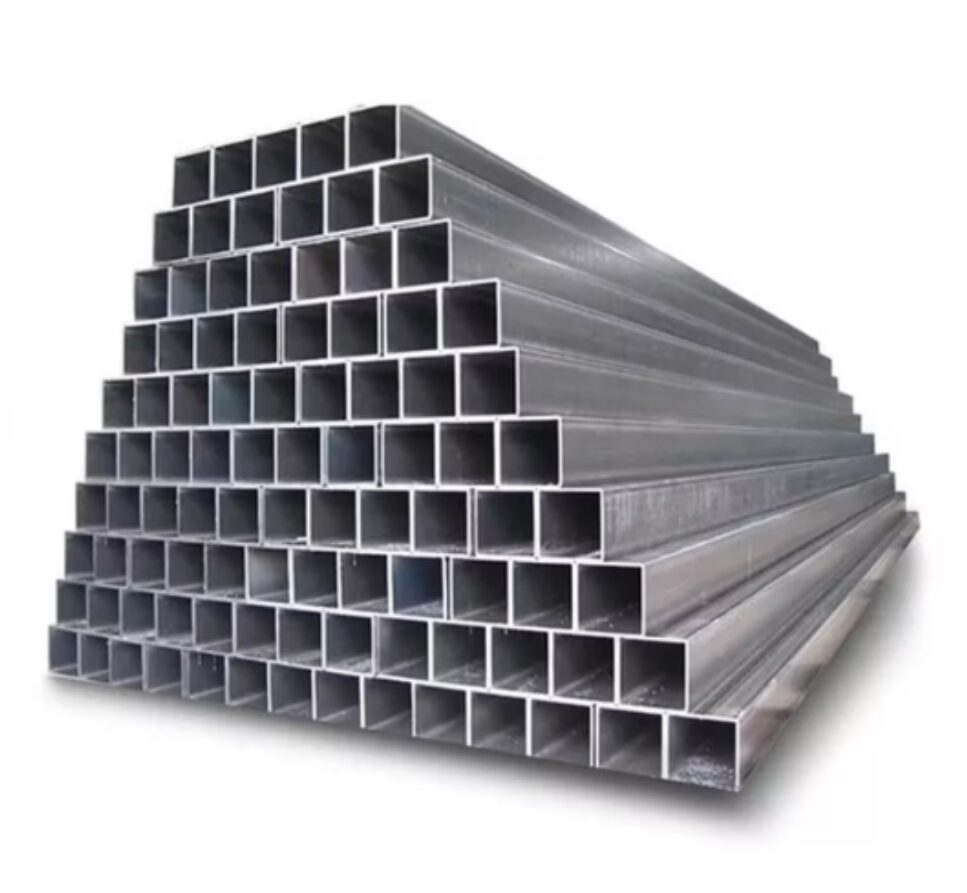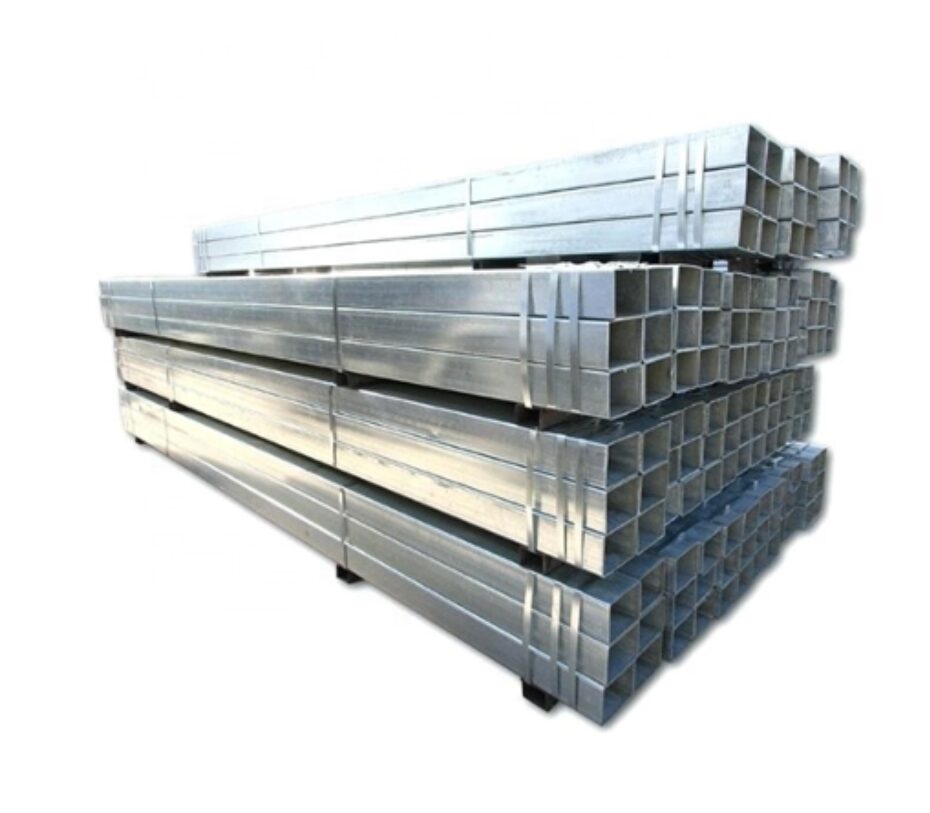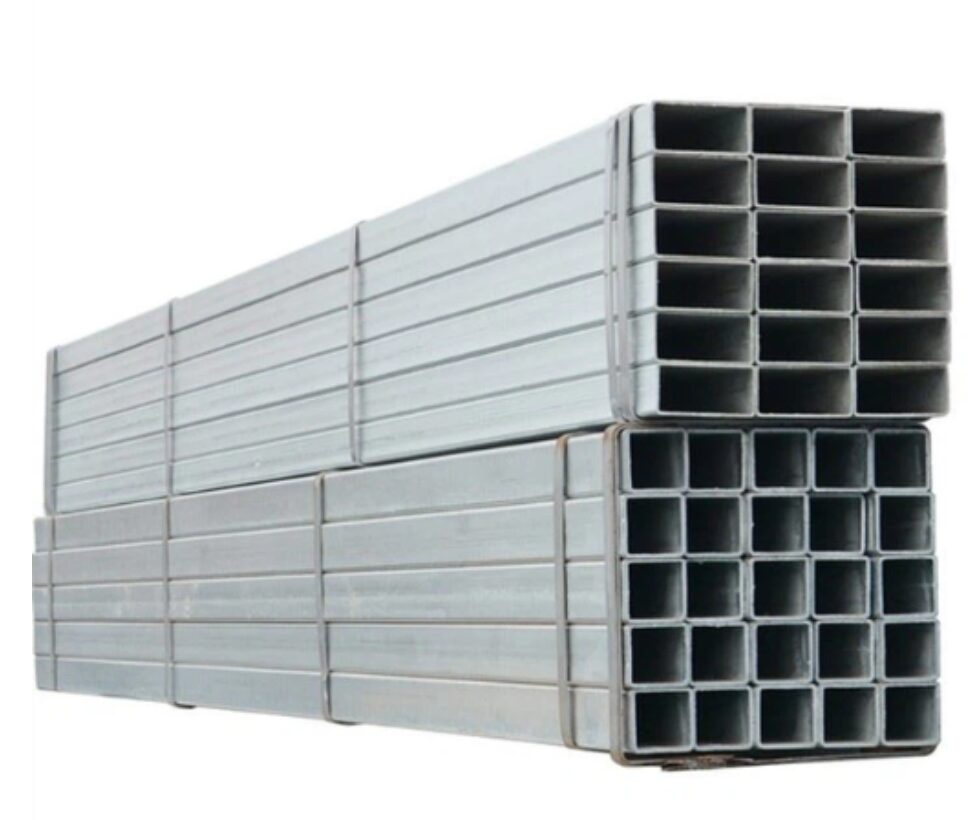Everything You Need to Know About Galvanized Square Steel

Galvanized square steel is a powerhouse material that plays a crucial role in countless industries, from construction to manufacturing. Known for its exceptional durability and resistance to corrosion, it has become a go-to choice for projects requiring strength and longevity. But what exactly is galvanized square steel, and why is it such a versatile and reliable option?
In this article, we’ll explore everything you need to know about this remarkable material its production process, unique advantages, key applications, and tips for selecting the right specifications. Whether you’re a seasoned professional or just beginning to work with steel, this guide will provide valuable insights to help you make informed decisions for your next project.
What is Mechanical Properties of Galvanized Square Steel?

Galvanized square steel has several key mechanical properties that make it a durable and versatile material. These include:
- Strength: It offers high tensile strength, making it resistant to deformation under heavy loads.
- Corrosion Resistance: The zinc coating provides excellent protection against rust and environmental damage, increasing its lifespan.
- Durability: Galvanized steel is robust and can withstand wear and tear in demanding applications.
- Formability: Despite its strength, it retains good workability, allowing it to be shaped or welded as needed.
These properties make galvanized square steel ideal for construction, manufacturing, and outdoor applications where strength and resistance to corrosion are essential.
How does the zinc coating enhance corrosion resistance?
The zinc coating enhances corrosion resistance primarily through its protective barrier and sacrificial properties. First, the zinc layer acts as a physical barrier, preventing moisture, oxygen, and other corrosive elements from reaching the steel surface. Second, even if the coating is scratched or damaged, zinc provides cathodic protection by sacrificing itself to corrosion in place of the steel.
This process is known as galvanic action, where zinc, being more reactive, corrodes preferentially to protect the underlying steel. Additionally, the zinc coating naturally forms a thin, durable patina of zinc oxide and zinc carbonate over time, further enhancing its resistance to environmental factors.
What are the structural benefits of using galvanized square tubing?
Galvanized square tubing offers a combination of strength, durability, and resistance to corrosion, making it a reliable choice for various structural applications. Its galvanized coating protects the steel from rust and degradation, even in extreme weather conditions or highly humid environments, significantly extending its lifespan.
The square shape provides excellent load-bearing capabilities and consistent structural integrity, distributing weight evenly and making it ideal for framing, fencing, and construction projects. Additionally, galvanized square tubing requires minimal maintenance, reducing long-term costs and ensuring dependable performance for years.
Is galvanized square steel suitable for heavy-duty applications?
Yes, galvanized square steel is highly suitable for heavy-duty applications. Its galvanized coating protects it from rust and corrosion, making it durable in harsh environments. The square shape offers excellent structural integrity and load-bearing capability, ensuring reliable performance under heavy stress. Additionally, its low maintenance requirements and long lifespan make it a cost-effective choice for demanding construction, industrial, and commercial uses.
View Dapu Metal-Galvanized Square Steel For More Details
Why Choose Galvanized Square Steel for Mechanical Construction?

Supplier in Galvanized Steel, Aluminum&Copper Alloy is an excellent choice for mechanical construction due to its strength, durability, and resistance to rust and corrosion. Its galvanized coating protects against environmental wear, ensuring a longer lifespan with minimal maintenance. The square shape provides strong structural support, making it ideal for applications requiring stability and load-bearing capability. Additionally, its cost-effectiveness and reliable performance make it a preferred material for demanding mechanical construction projects.
What makes it ideal for building and renovation projects?
The square galvanized steel tube is ideal for building and renovation projects due to its exceptional strength, durability, and versatility. Its galvanized coating provides corrosion resistance, ensuring longevity even in harsh environments. The square shape offers superior load-bearing capacity, making it suitable for structural applications such as framing, fencing, and supports. Additionally, it is easy to cut, weld, and customize, allowing for flexibility in various construction and renovation designs while minimizing maintenance needs over time.
How does it compare to other metal options like aluminum?
When comparing galvanized square tubing to aluminum, both have distinct advantages depending on the application. Galvanized square tubing is heavier and offers greater strength and durability, especially in structural and load-bearing uses. Its galvanized coating ensures excellent corrosion resistance, making it ideal for outdoor or harsh environments.
On the other hand, aluminum is lighter, resistant to rust without additional coating, and easier to work with for projects that prioritize weight and flexibility. While aluminum may be preferred for applications where portability is key, galvanized square tubing provides a cost-effective and robust solution for long-term, heavy-duty needs.
What are its advantages in outdoor environments?
Galvanized square tubing offers several advantages in outdoor environments due to its durability and resistance to weather-related wear. The zinc coating provides excellent protection against corrosion and rust, even when exposed to moisture or harsh weather conditions, significantly extending its lifespan. Its sturdy construction makes it highly resistant to mechanical damage, ensuring reliability in heavy-duty applications like fencing, structural support, and outdoor frameworks.
Additionally, galvanized square tubing requires minimal maintenance, making it an economical and low-effort choice for long-term outdoor use. Its robustness and cost-effectiveness make it a preferred material in construction and industrial projects exposed to the elements.
How is Galvanized Square Steel Manufactured?

Galvanized square steel is manufactured through a process that enhances its durability and resistance to corrosion. The production begins with forming the square tube from steel, which is then thoroughly cleaned to remove impurities. Once cleaned, the tubing undergoes a galvanization process, typically through hot-dip galvanizing. This involves immersing the steel in molten zinc, which forms a protective coating, bonding to the steel surface and shielding it from rust and degradation. After the zinc layer solidifies, the tubing is inspected to ensure a uniform coating and desired quality. This straightforward process makes galvanized square steel a reliable material for long-term use in outdoor and industrial applications.
What is the galvanizing process?
The galvanizing process is a method used to protect steel or iron from corrosion by coating it with a layer of zinc. This is typically done through hot-dip galvanizing, where the metal is cleaned, dipped into molten zinc, and allowed to cool. The zinc coating acts as a barrier, preventing moisture and oxygen from causing rust. This process is highly effective and widely used in various industries for durable, long-lasting protection.
How does the zinc coating process work?
The zinc coating process primarily involves cleaning the metal to remove any impurities, followed by dipping it into molten zinc. The cleaning phase typically includes degreasing, pickling in an acid solution, and fluxing to ensure a clean surface for bonding. Once clean, the metal is submerged in molten zinc, where the zinc reacts with the surface, forming a series of zinc-iron alloy layers. These layers create a strong adhesive bond and act as a protective barrier against corrosion. Afterward, the coated metal is cooled, inspected, and ready for use, providing superior durability and resistance to rust.
What role does mild steel play in the production?
Mild steel serves as a key material in the production process due to its versatility, malleability, and cost-effectiveness. Its low carbon content allows it to be easily formed, welded, and coated, making it ideal for applications requiring galvanization. The smooth surface of mild steel ensures better adhesion of zinc during both hot-dip galvanizing and electro-galvanizing, resulting in a reliable and durable protective layer. Furthermore, its structural strength and adaptability make it a preferred choice across various industries, from construction to automotive manufacturing.
What are the Common Applications of Galvanized Square Steel?

Industries make extensive use of galvanized square steel as it is extremely durable and corrosion resistant. Its main applications are:
Construction: Used for framing, handrails, and fencing because of its strength and protective zinc coating.
Automotive: Used to manufacture brackets and frames.
Agricultural: Used for building greenhouses, irrigation systems, and enclosures for animals.
Furniture: Makes the frames of tables, chairs, and other household furniture.
Infrastructure: Used for long term outdoor use like guard rails, street signs, and utility poles.
Where is square tubing used in construction?
Square tubing is widely used in construction due to its strength, versatility, and durability. It is commonly utilized in the framework of buildings, including support columns and steel trusses. Its uniform shape makes it ideal for constructing bridges, gates, railings, and fences, offering stability and aesthetic appeal. Additionally, square tubing serves as a critical component in the fabrication of equipment platforms and machinery supports, providing robust structural integrity. Its resistance to bending and environmental elements ensures long-lasting performance in both indoor and outdoor applications.
How is it applied in automotive and industrial settings?
Square tubing plays a pivotal role in both automotive and industrial settings. In the automotive industry, it is extensively used for building vehicle frames, roll cages, and exhaust systems, thanks to its strength and lightweight properties. Industrial applications often involve the use of square tubing in conveyor systems, structural supports, and heavy machinery. Its durability and versatility make it a reliable choice for withstanding high-stress conditions and maintaining long-term performance.
Can it be used in fence and frame projects?
Yes, square tubing is an excellent choice for fence and frame projects due to its strength, durability, and versatility. It provides a sturdy framework that can endure various weather conditions and resist bending or warping over time. Square tubing is also easy to cut, weld, and customize, making it suitable for creating robust fences, gates, furniture frames, and decorative structures. Its clean and modern appearance further adds aesthetic value to these projects while maintaining functionality.
How to Determine the Right Size and Dimension for Your Needs?
To determine

the right size and dimension for your needs, start by assessing the purpose of your project. Consider the weight, load, or force the material will need to support to ensure durability and safety. Measure the available space to ensure the material fits properly without obstructing other elements. For structural applications, choose tubing with thicker walls for added strength; for lightweight projects, thinner walls may be sufficient.
What factors affect the choice of steel square tube?
When choosing a steel square tube, these factors should be considered to ensure best performance and application suitability.
Material Grade – Different grades of steel exhibit varying levels of quality and strength, corrosion resistance, and weldability. For structural applications, select ASTM A500. For corrosive environments, stainless steel is more forgiving.
Size and Wall Thickness – The dimensions and wall thickness of the tube affect strength, load-bearing capacity, and even its weight. In projects with lighter structure demands, thinner walls are preferable. For more challenging projects, mid-thickness walls offer a good balance of strength and weight savings.
Coating or Finish – The durability and lifespan of steel are greatly enhanced through protective coatings like galvanization or even powder coating silvers, especially in corrosive or outdoor environments.
Expected Use – Determine if the tube is needed for construction, furniture, machinery, or other purposes. Regardless of the project, choosing a product designed to meet the anticipated stresses and environmental conditions is essential.
These factors greatly influence the region’s quality and availability, along with the project’s budget and cost. Keeping these points in mind, optimal performance can definitely be achieved.
How to calculate the required length and quantity?
To calculate the required length and quantity of tubes for your project, follow these concise steps:
- Understand the Project Specifications: Begin by identifying the purpose and scope of the project. Determine the dimensions, load requirements, and any design constraints that might influence the tube length and quantity.
- Measure the Area or Framework: Accurately measure the area or structure where the tubes will be used. Use tools like a tape measure or laser measure for precision, and account for adjustments such as overlaps, joints, and extra allowances for cutting.
- Calculate Based on Design Plans: If a blueprint or design is available, use it to calculate the total length of tubing required. Add the lengths of individual sections and multiply by the number of units or repetitions in the design.
- Factor in Waste or Surplus: Include a buffer of 5-10% to account for cutting errors, waste, or future modifications. This ensures you have adequate material without running short during the project.
- Consult Manufacturers or Suppliers: Check with tube manufacturers or Supplier in Galvanized Steel, Aluminum&Copper Alloy for standard lengths and availability. Packages or bulk orders may influence your calculations, as specific dimensions and quantities are often predefined.
Using these methods will help ensure accurate estimations and minimize waste, saving both time and resources.
What are the standard gauge steel options available?
Standard gauge steel is commonly categorized based on its thickness, which is measured in gauge numbers. The lower the gauge number, the thicker the steel. For example, 16-gauge steel is thicker than 18-gauge steel. Commonly used steel gauge options include:
- 16-Gauge Steel: A heavy-duty option typically used for structural and industrial applications due to its durability and strength. Its approximate thickness is 0.0625 inches (1.59 mm).
- 18-Gauge Steel: Slightly thinner, often used for automotive panels, furniture, and ductwork. Its thickness is around 0.0478 inches (1.214 mm).
- 20-Gauge Steel: A lightweight and versatile option used in appliances, sculptures, and lightweight construction, with a thickness of approximately 0.0359 inches (0.912 mm).
These gauges may vary slightly depending on the material composition (e.g., galvanized steel or stainless steel) and specific manufacturer standards.
Frequently Asked Questions (FAQs)
Q: What is galvanized square steel?
A: Galvanized square steel refers to steel tubing that has been coated with a layer of zinc to prevent rusting. This process enhances the durability and longevity of the steel, making it ideal for various construction and industrial applications.
Q: How is galvanized square steel produced?
A: Galvanized square steel is produced by immersing steel pipes or beams in a bath of molten zinc, a process known as hot-dip galvanizing. This creates a protective layer that prevents corrosion and extends the life of the steel structure.
Q: What are the common applications of galvanized square steel?
A: Galvanized square steel is commonly used in construction for making frames, supports, and beams. It is also used in the creation of fences, railing systems, and various types of steel tubing and pipes.
Q: What are the benefits of using galvanized square steel?
A: The benefits of using galvanized square steel include its resistance to rust and corrosion, long lifespan, and structural strength. It is also easy to work with, making it a preferred choice for builders and engineers.
Q: Is galvanized square steel environmentally friendly?
A: While galvanized square steel itself is not considered eco-friendly, it can be used in conjunction with eco-friendly materials like eco-friendly wood veneers. Additionally, its long lifespan and recyclability contribute to a more sustainable construction process.
Q: What sizes are available for galvanized square steel?
A: Galvanized square steel comes in various sizes to meet different needs. The sizing typically ranges from small pipes to large beams, allowing for versatility in construction projects. Specific dimensions can be customized based on requirements.
Q: How does galvanized square steel compare to regular steel?
A: Galvanized square steel offers superior corrosion resistance compared to regular steel due to its zinc coating. This makes it more functional and durable, particularly in outdoor or moist environments where adequate ventilation might be lacking.
Q: Can galvanized square steel be used indoors?
A: Yes, galvanized square steel can be used indoors. Its aesthetic appeal and strength make it suitable for interior applications, such as structural supports and decorative elements. However, ensuring adequate ventilation can further prolong its lifespan.
Q: What maintenance does galvanized square steel require?
A: Galvanized square steel requires minimal maintenance due to its protective zinc coating. However, regular inspections for any signs of damage or wear, particularly at joints and connections where screws are used, can help maintain its integrity.




